The peach tree is a favorite for its deliciously sweet fruit. The tree needs proper care to preserve its beauty. One of the considerations in caring for a peach tree is shielding its roots from severe environmental conditions. How can you protect the roots? Do you need to mulch around a peach tree? We researched these questions and have the answers.
Mulching around a peach tree is necessary. Mulching supports the tree in retaining moisture, helps control weed spread, and enhances the soil grade for the vigor and health of the tree.
What type of mulch can you use for your peach trees? We'll explore this question and look at the benefits and risks of mulching around a peach tree in this post. Continue reading as we dive into these topics.
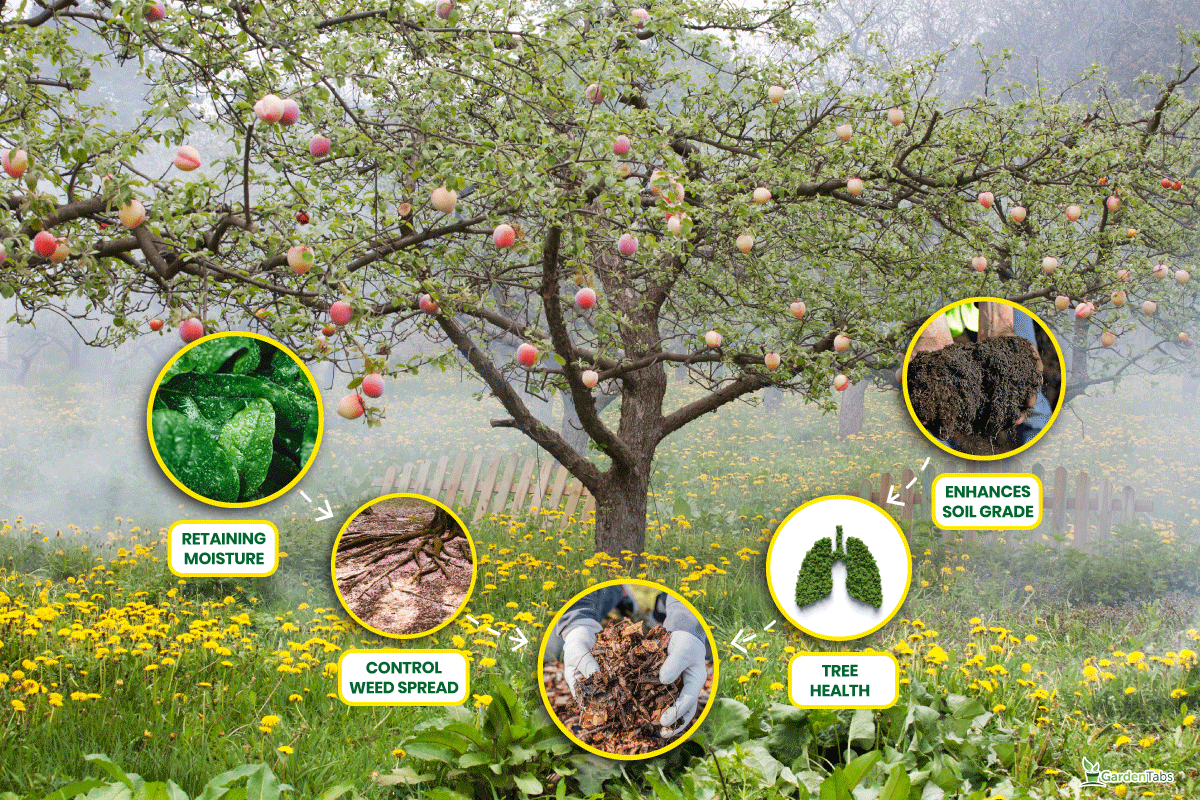
Do Peach Trees Need Mulching?
Peach trees need mulching as additional maintenance. Mulching is typically a good step that can benefit the tree's health.
Mulch assists in regulating soil temperature, subduing weed growth, and retaining soil moisture. It adds organic composition to the soil. These factors improve the health and vitality of the peach tree for better fruit production and growth.
As a tip for mulching trees, you should make sure to use the correct mulch type and apply it properly. Organic materials such as shredded leaves, compost, wood chips, or straw make good options for peach trees mulching, as they crumble gradually and provide nutrients to the soil.
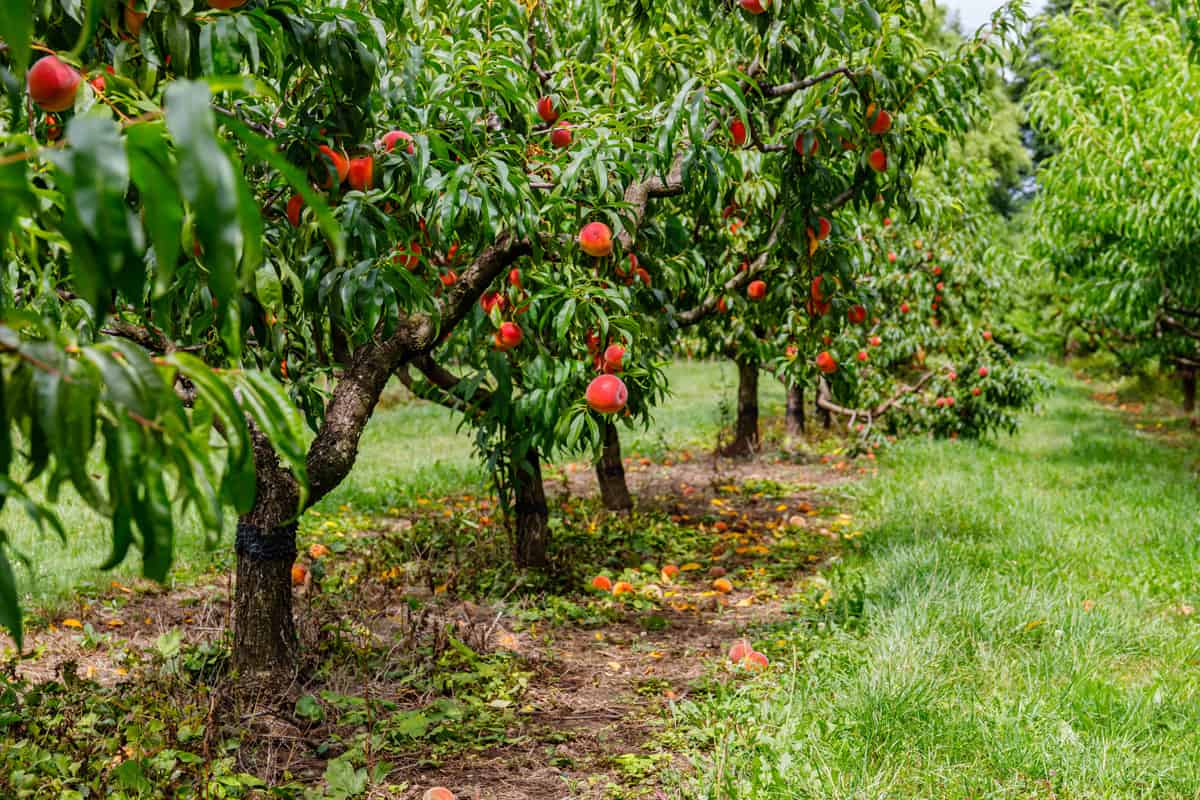
You should apply mulch properly in layers around the bottom of the tree and note that over-mulching can also have a negative impact. We'll discuss this later in the post.
What Mulch Can You Use For A Peach Tree?
There are several types of mulch you can utilize for this tree. Some common mulch types include:
Wood Chips

Wood chips come from twigs, shredded bark, and branches. Wood chips are a favored option for fruit tree mulching. This mulch breaks down gradually, so you will need to supply wood chips regularly to the soil.
You can use a wood chip shredder to break the material into tiny pieces. Be sure to cover the soil with two inches of wood chips to reduce moisture evaporation.
Click here to see this wood chipper on Amazon.
Pine Straw
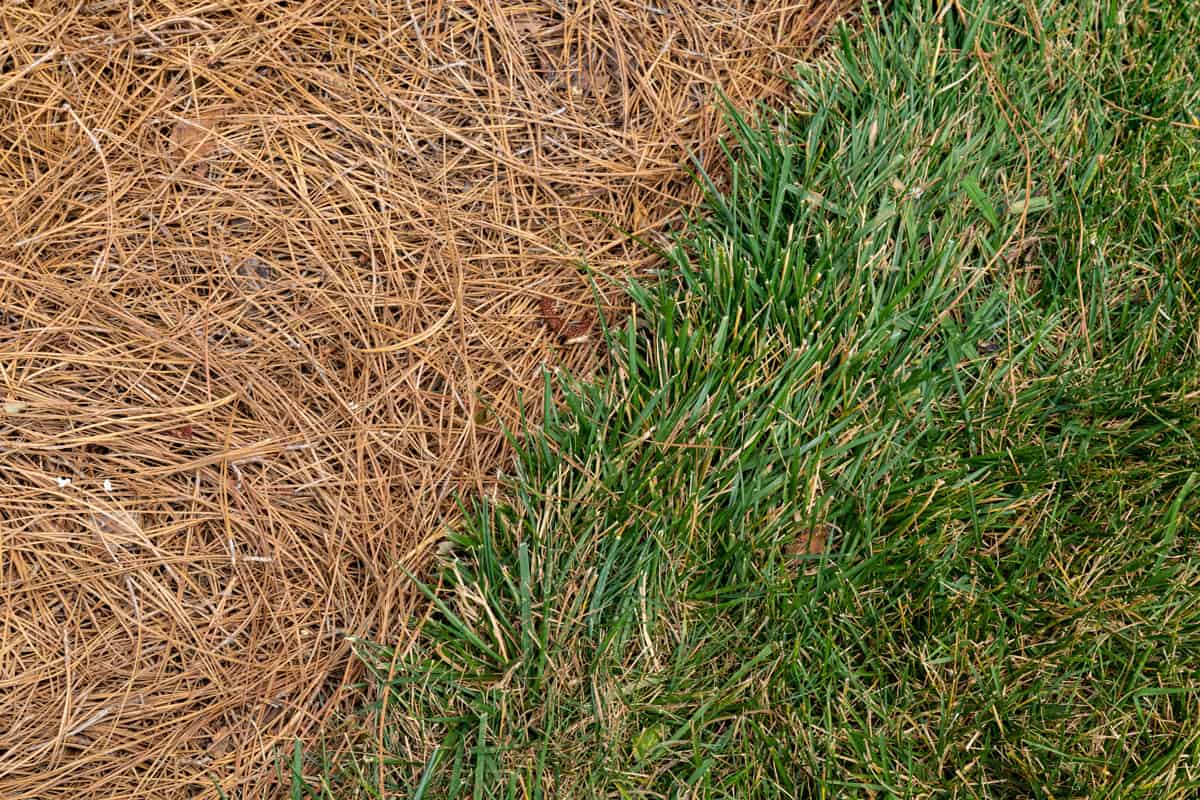
Pine straw is a good alternative for acid-loving plants like peaches. Pine straw is light but can last longer than other mulch types. Pine straw is effective in retaining soil moisture.
Click here to check pine straw mulch on Amazon.
Shredded Leaves
Shredded leaves are suitable for gardeners who appreciate free and ample organic resources. You can collect leaves for weeks and place them in a leaf bin or bag prior to mulching.
A leaf mulcher is a handy tool you can use after collecting leaves. It will shred leaves so you can easily use them as mulch. As with wood chips, you will need to replace this type of mulch because shredded leaves easily break down.
Click here to see this leaf mulcher on Amazon.
Compost
Compost is a good alternative for adding organic nutrients to the soil. Compost has many benefits, including balancing pH levels, water retention properties, providing nutrients, neutralizing some toxins, encouraging microorganisms, and serving as organic fertilizer.
If you want to learn how to make homemade compost, read this post, "How To Compost Garden Waste At Home [3 Foolproof Techniques]."
Grass clippings
Grass clippings are a good mulch option, but drying them is necessary before applying them around the tree. Apply one to two inches of grass clippings around the tree base. Do not use clippings from soil with herbicide treatments that could harm the tree.
What Are The Benefits Of Proper Mulching?
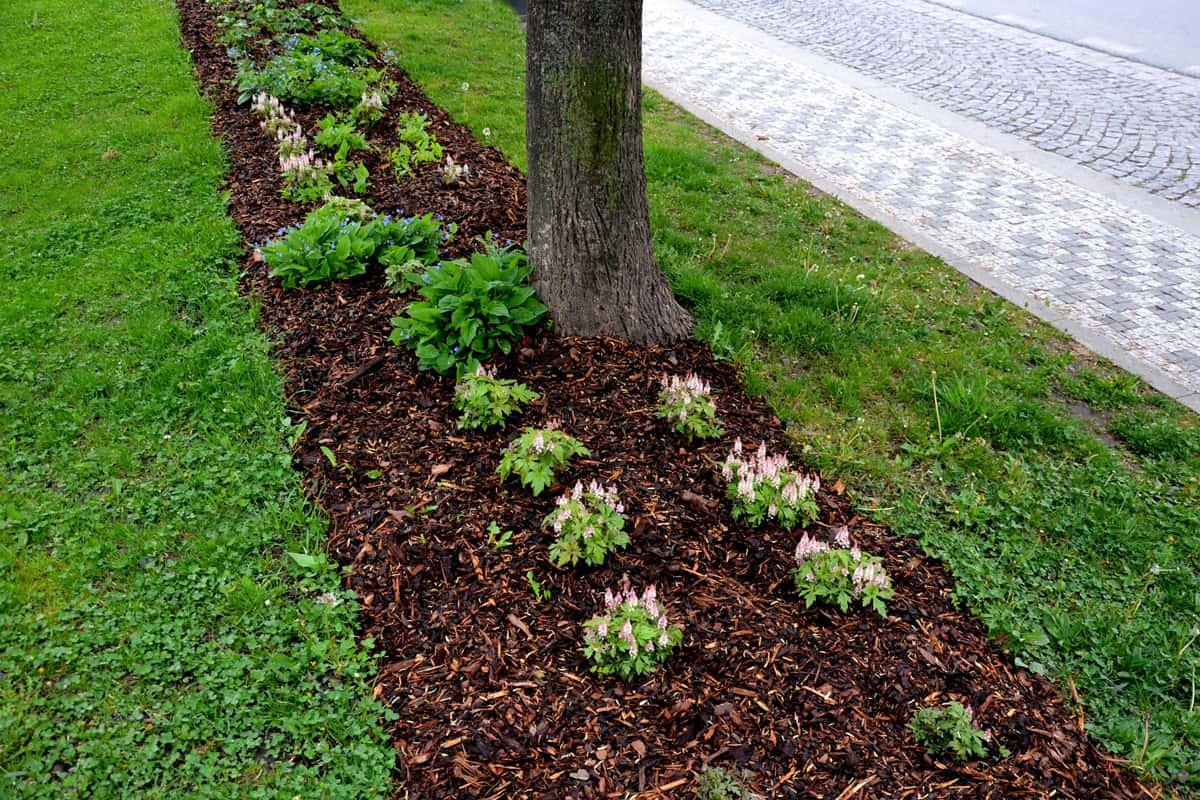
Proper mulching around a peach tree can provide several benefits, including:
- Adding organic matter and nutrients can help to improve the soil and preserve moisture by enriching water penetration and delaying evaporation.
- Mulch can help control the soil temperature in summer and winter.
- A layer of mulch can help to stop the growth of weeds around the bottom of the tree, lessening rivalry for water and nutrients.
- Some types of mulch, such as cedar bark or pine needles, can assist in repulsing pests like ants and mites.
- Mulch can also discourage the spread of soil-borne diseases, such as verticillium wilt and root rot, which can cause severe problems and the decline of trees.
- Mulching controls soil compression by reducing ground gridlock, allowing roots to breathe to promote tree health throughout seasons.
Is Over-Mulching Bad For Trees?
Over-mulching can be bad for trees. While mulch is beneficial to trees in many ways, too much of it can cause problems. It is far-fetched that a peach tree will die because of mulching if mulch is applied correctly and in moderation.
Here are some potentially harmful effects of over-mulching:
Moisture Retention
Moisture retention is beneficial, but too much moisture can lead to waterlogging and root suffocation. Soggy soil can also stimulate the growth of harmful fungi and bacteria.
Decomposing mulch creates heat that can hamper the movement of water nutrients in the tree and cause the trunk to decay.
Pest And Diseases
Over-mulching can form warm, moist surroundings that can create a breeding ground for pests and diseases, which can cause root rot and kill the tree.
Maintaining a mulch depth of no more than two inches is recommended to refresh the mulch annually as it granulates. You should avoid piling up mulch against the tree trunk.
Oxygen Shortage
Too much mulch placed around the bottom of the tree can prevent air from reaching the roots, which could lead to oxygen depletion and root rot.
How To Mulch Around Peach Tree
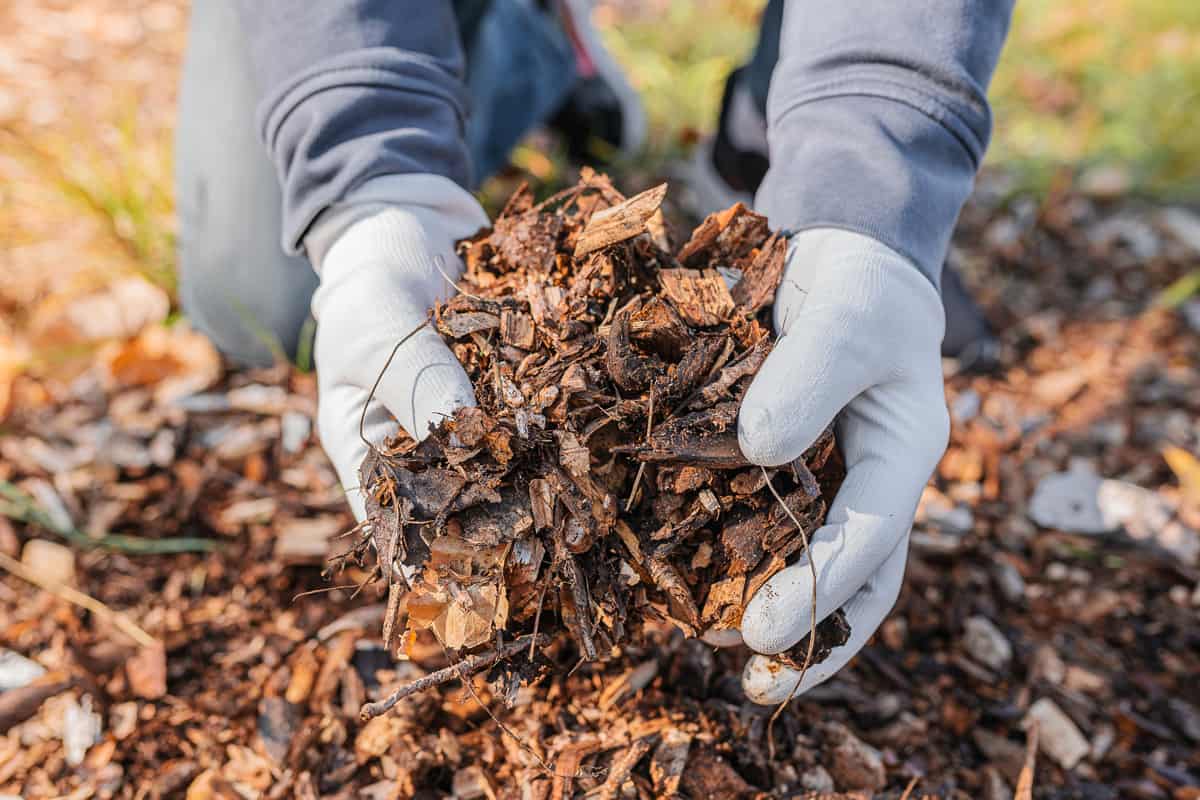
You should learn how to mulch around the tree base for proper tree care. Here are the steps for how to properly mulch around a peach tree:
- Choose the correct type of mulch suitable for your soil type and the weather in your area.
- Lay two to three inches of mulch around the tree base and cover the entire root area. This thickness will allow for retaining moisture in the soil, regulating soil temperature, and suppressing weeds.
- Leave a small gap of a few inches around the tree trunk's base to contain moisture buildup and the possibility of insect or disease situations. The roots need to breathe, so avoid compacting the mulch.
- Water the mulch after applying it to let it settle into the soil and granulate.
What Are The Environmental Benefits Of Mulching?
Here are some of the benefits of mulching:
- Mulching decreases soil erosion and enhances soil quality.
- Conserving water is another impact of mulching. For areas with insufficient water supply, mulching is essential to reduce water usage by improving soil moisture retention.
- Mulching is helpful for young trees by shielding their shallow root systems and encouraging healthy growth.
- Mulching is a favored landscaping method that can help to make an outdoor space more attractive.
- Soil compression can lead to inferior root growth and diminished tree health. Mulching can help to loosen soil compression by enhancing the soil system and permitting better air and water flow.
Does Mulch Protect Plant And Trees From Heat Stress?
Mulching helps reduce plant stress caused by drought and extreme temperatures. Direct heat wreaks havoc on plants and tree roots, but using reflective mulch such as grass clippings can be a saver. Aside from heat stress, mulching can protect trees from severe cold weather conditions.
Summing Up
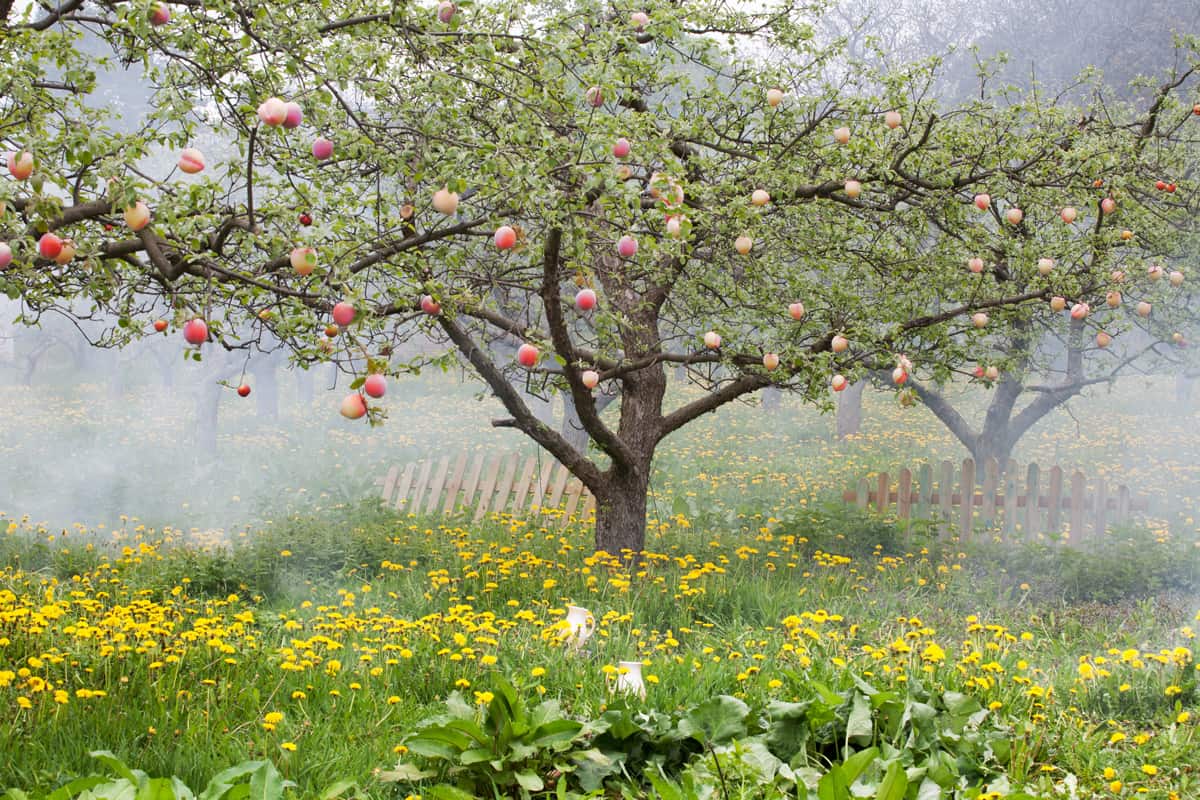
Proper mulching can offer benefits such as moisture retention, weed suppression, and improved soil quality to ensure your peach tree's health and productivity. You should apply the mulch properly to avoid issues such as root rot and other fungal diseases.
Over-mulching can lead to a tree's decline. Consider the benefits and risks of mulching mentioned in this post when applying mulch to your tree.
For more discussions about mulch, please read the following posts:
Is Mulch Bad For Dogs To Eat Or To Walk On; Here's What You Need To Know!



